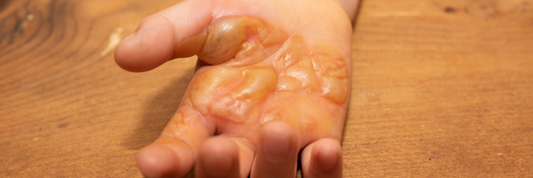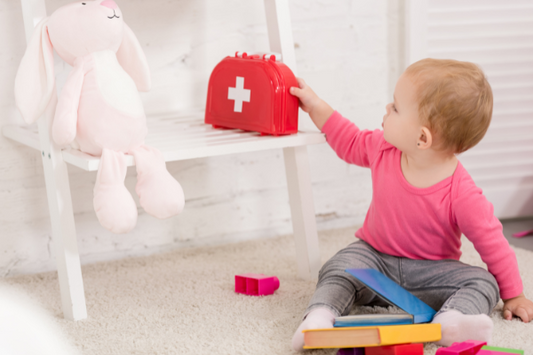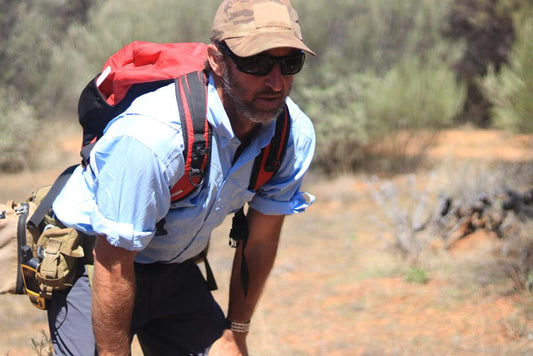Ensuring Little Ones are Safe
Ae you looking for an actual check list for a childcare first aid kit?
Ensuring the safety and well-being of children in daycare is paramount. A well-stocked and easily accessible first aid kit is a fundamental requirement for any childcare facility in New South Wales. But what exactly should you have in a daycare first aid kit to effectively manage minor injuries and provide immediate care in case of emergencies? This blog post will outline the essential items, keeping in mind the specific needs and potential incidents that can occur in a daycare setting in NSW.
The Essential Checklist for Your NSW Daycare First Aid Kit
While specific regulations may evolve, a comprehensive daycare first aid kit in NSW should generally include the following categories of items:
For Cleaning and Antiseptic Care:
-
Sterile Saline Solution: For flushing eyes and wounds.
-
Antiseptic Wipes or Solution: Alcohol-free options are preferred for young skin to clean minor cuts and scrapes.
-
Cotton Balls and Cotton Tips: For applying antiseptic and cleaning small areas.
For Covering and Protecting Injuries:
-
Adhesive Bandages (various sizes and shapes): Including those suitable for sensitive skin.
-
Hypoallergenic Adhesive Tape: For securing dressings.
-
Non-Adherent Dressings (various sizes): For wounds that shouldn't have bandages sticking to them.
-
Sterile Gauze Pads (various sizes): For covering and protecting wounds.
-
Triangular Bandages: For slings and immobilising limbs.
-
Crepe Bandages (various sizes): For support and compression.
For Treating Specific Injuries:
-
Cold Packs (instant or reusable): For reducing swelling and pain from bumps and bruises.
-
Burn Gel or Cream: Specifically formulated for minor burns.
-
Eye Wash: In addition to saline, a dedicated eyewash bottle can be beneficial.
-
Tweezers: For removing splinters or small objects.
-
Scissors (blunt-nosed): For safely cutting tape and dressings.
Important Tools and Accessories:
-
Disposable Gloves (non-latex): For maintaining hygiene and preventing infection.
-
CPR Mask (with one-way valve): For safe administration of rescue breaths.
-
Digital Thermometer (non-contact preferred): For accurately checking temperatures.
-
First Aid Guide/Booklet: A quick reference for managing common injuries and emergencies.
-
Accident Report Forms: For documenting incidents and actions taken.
-
Waterproof Bag or Container: To keep the kit contents clean, dry, and easily portable.
-
List of Emergency Contact Numbers: Including parents, doctors, and local emergency services.
Medications:
-
Important Note: Generally, daycare centres in NSW should not administer prescription or over-the-counter medications unless specifically authorised by a doctor and parents/guardians with a documented medication management plan. Any medications for individual children with allergies or specific conditions (like EpiPens for anaphylaxis or asthma inhalers) should be stored securely and be readily accessible according to their individual health care plans, separate from the general first aid kit.
Unique Perspective: Beyond the Basics - Creating a Child-Centric First Aid Approach
While having the right supplies is crucial, a truly effective daycare first aid approach goes beyond simply ticking off items on a list. It involves creating a child-centric environment where first aid is administered with empathy, understanding, and a focus on minimizing distress.
Consider incorporating elements like:
-
Child-Friendly Language: When attending to an injury, explain what you are doing in simple, reassuring terms. For example, instead of saying "antiseptic," you might say "special water to clean the boo-boo."
-
Distraction Techniques: Have small, age-appropriate distractions available, like a favourite sticker or a simple song, to help take their mind off the discomfort.
-
Visual Aids: Consider having picture charts illustrating basic first aid steps for common minor injuries. This can help educators and even older children understand the process.
-
Comfort Items: A designated comfort item, like a soft toy, can provide reassurance to a distressed child during first aid administration.
-
Regular Practice and Drills: Conduct regular, age-appropriate "first aid scenarios" with educators to ensure they are confident and competent in using the kit and responding to different situations. This also helps children become familiar with the process in a non-threatening way.
By focusing on the emotional well-being of the child alongside the physical treatment, daycares can create a more positive and reassuring experience when first aid is required.
Location and Maintenance of Your Daycare First Aid Kit
Your first aid kit should be:
-
Easily Accessible: Known to all staff and readily available in common areas.
-
Clearly Labelled: So it can be identified quickly in an emergency.
-
Stored Securely: But not locked, to prevent unauthorised access by children while ensuring quick access for adults.
-
Checked Regularly: At least monthly, to ensure all items are within their expiry dates and replenished as needed. Keep a log of checks and restocking.
Conclusion
A well-equipped and thoughtfully managed first aid kit is an indispensable asset for any daycare centre in NSW. By adhering to essential checklists and adopting a child-centric approach to first aid, you can create a safer and more reassuring environment for the children in your care, providing peace of mind for both educators and parents.
External Australian References for Google EAT:
-
NSW Government - Education and Care Services National Regulations: (legislation.nsw.gov.au - search for "Education and Care Services National Regulations") - This outlines the legal requirements for education and care services in NSW, which includes stipulations around health, safety, and first aid.
-
Australian Children's Education & Care Quality Authority (ACECQA): (acecqa.gov.au) - The national body overseeing the National Quality Framework for early childhood education and care, providing guidance on health and safety practices, including first aid.
-
Kidsafe NSW: (kidsafensw.org) - A leading child safety organisation in NSW offering resources and information on preventing injuries and promoting child safety in various environments, including daycare.
-
St John Ambulance Australia (NSW Branch): (https://www.google.com/search?q=stjohnnsw.com.au) - A reputable provider of first aid training and supplies in NSW, offering courses specifically tailored for educators and childcare professionals.
-
healthdirect.gov.au: (healthdirect.gov.au) - A national government-funded health information website providing reliable information on various health topics, including first aid for common childhood injuries.
















